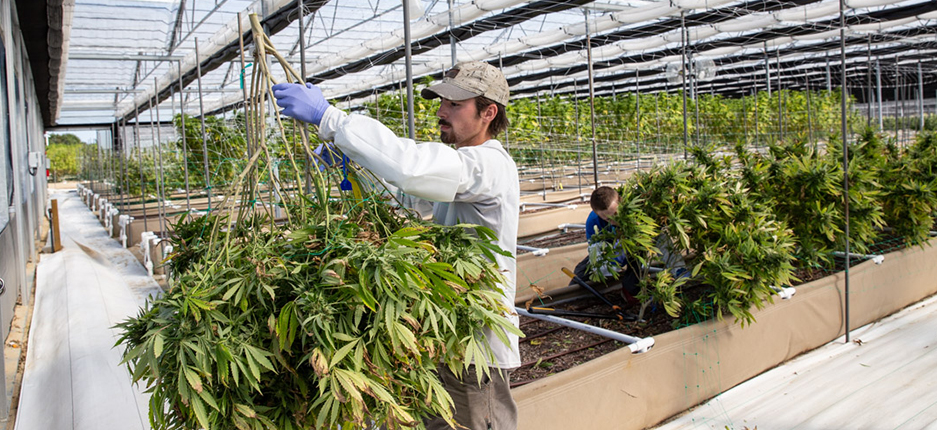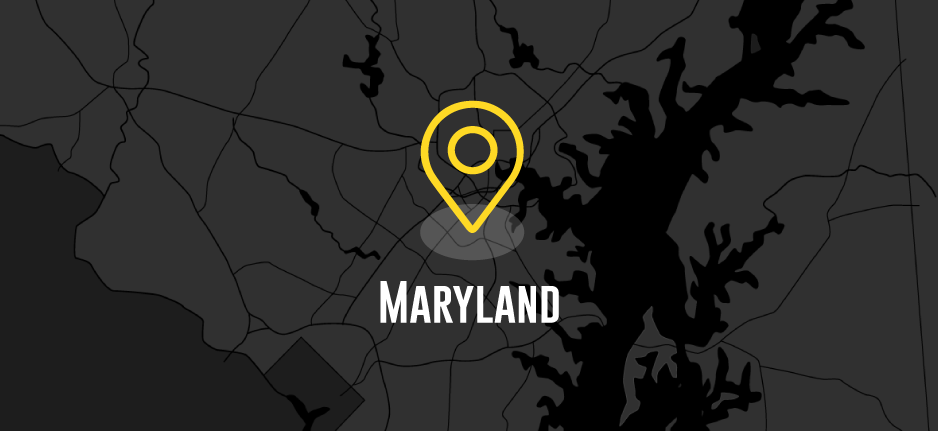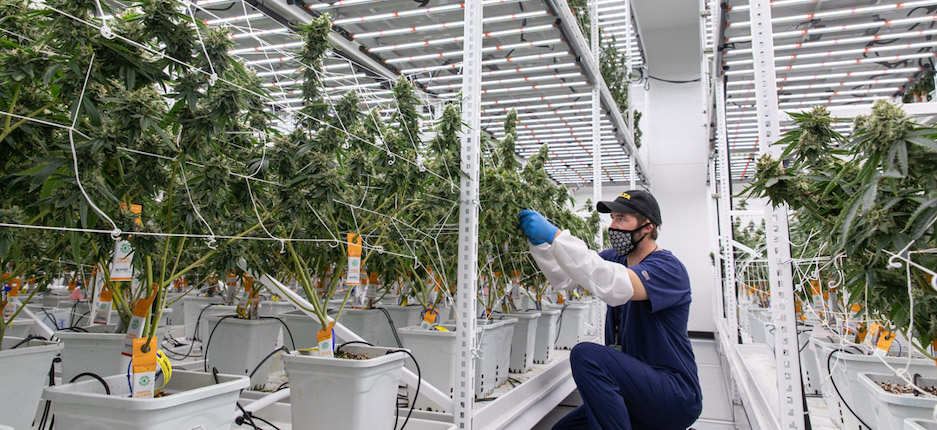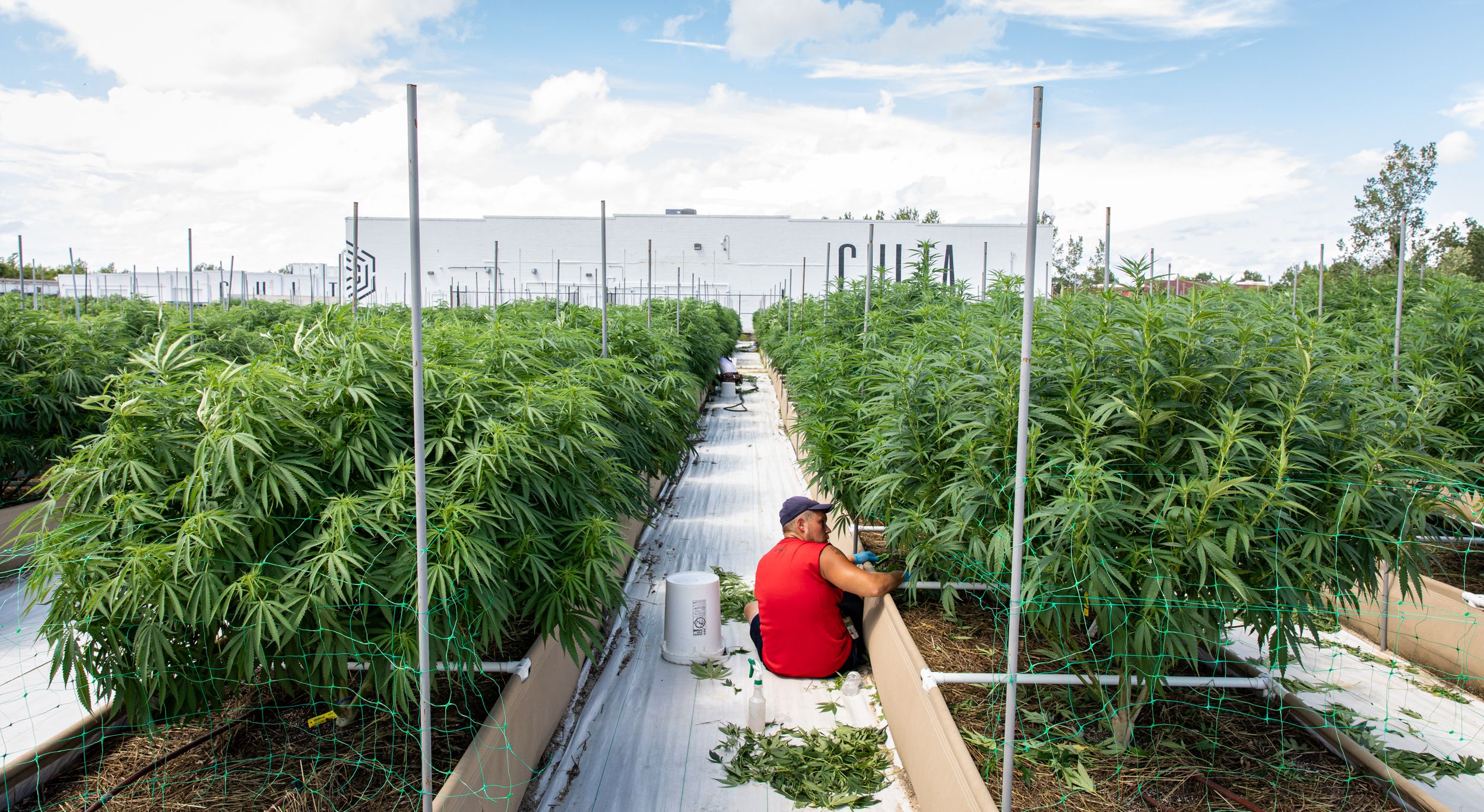Fall may be synonymous with apple picking, pumpkin patches, and sweet potato casserole, but did you know that October is when 80-85% of the cannabis industry’s outdoor cannabis is harvested? It’s such an important month in the cannabis industry that growers and cultivators have given it a nickname: Croptober. As the name implies, Croptober is the time of year when outdoor farmers across the country harvest their sun-grown cannabis and begin to prepare it for their medicinal patients. It joins 420 and 710 as an important “season” in the cannabis industry.
If you’re curious about Croptober and want to learn more, keep reading for more information on how it impacts cultivators, indoor growers, and you, the patient.
So, why October?
Cannabis is an annual plant, which means it’s planted, grows to maturity, is harvested, and dies in only one growing season. Since most outdoor cultivators start their growing process in mid-spring and rely on the sun’s natural cycles to develop female cannabis plants, as the daylight hours get shorter in the fall, the plants naturally switch from growing large stalks and leaves to buds. Basically, the shorter days send a signal to the plant that it’s running out of time and needs to grow more buds so it can reproduce.
“Croptober is the culmination of all our hard work throughout the growing season,” said Jay Bouton, Senior Director of Cultivation at CULTA. “It’s my favorite time of the year because it means we’re one step closer to providing fresh, high-quality cannabis to our patients throughout the state of Maryland.”
At the end of the day, outdoor cannabis harvesting is at the mercy of nature, and if nature says October is the best time to harvest, then it’s the best time for cultivators to roll up their sleeves and harvest.
What does Croptober mean for outdoor cultivators?
For cultivators, Croptober is one of the busiest times of the year, especially since the other “seasons” (420 and 710) don’t rely as heavily on actual cultivation. Cultivators need to chop, dry, and trim their outdoor cannabis in a short amount of time, on top of managing the usual day-to-day operations of running a grow facility. And, depending on the size of the farm (CULTA’s outdoor farm sits on three acres!), cultivation may even require extra personnel to be hired just for the Croptober season.
Growing and cultivating outdoor cannabis isn’t all fun and games, either, as outdoor cannabis comes with its own set of risks, the most obvious being inclement weather. Weather isn’t as easy to predict in the fall as it is in the summer, and many cannabis cultivators, particularly those on the East Coast, have to contend with monsoons, heavy rainfall, and winter storms that can delay the harvest or damage crops. Fortunately, technology is improving year after year, and agricultural crop covering systems, such as those developed by Cravo, can help protect the crop from damage.
What about indoor growers?
Since indoor growers can easily control things like light, temperature, and humidity, Croptober isn’t a monumental occasion for them. In fact, some indoor growers may even consider Croptober to be a threat. Due to the large amount of processed flower entering the market during the months directly after Croptober, some indoor growers may have to reduce their prices to stay competitive. According to one outdoor grower, the massive influx of outdoor-grown cannabis “could cause the market price of a pound to drop by $400 to $500.”
Of course, indoor cultivators benefit from a more predictable growing environment and don’t risk losing their entire crop to bad weather conditions, so some may say it all balances out in the end.
Cannabis harvesting facts
We couldn’t write an article about Croptober without highlighting some cannabis harvesting statistics and facts. Here are some we think you’ll find interesting:
- Throughout the year, Americans consume roughly six thousand tons of cannabis.
- Christopher Columbus was the one that brought the first hemp seed to the new world.
- The most prominent source of cannabis in the U.S. is in the state of California, particularly Northern California.
- Mexico is one of the largest international importers; most of it from the black market.
- Cannabis will lose approximately 75% of its weight during drying due to water evaporation.
- Cannabis is one of the most diversified and widespread plants, and can be cultivated in a variety of climates and soils.
- The potency of cannabis is influenced by the genetic makeup of the plant, climate, soil, growing conditions, timing of the harvest, and drying and storing techniques.
-jpg.jpeg)
Croptober for patients
Although it may seem like Croptober has the most direct impact on cultivators, patients can also see some benefits during this time. After harvesting is complete in October, many cannabis dispensaries will be stocked with fresh, sun-grown cannabis in November and December, allowing patients to get their hands on fresh Croptober cannabis. Some cannabis farmers, namely those located in recreational markets, even allow tourists to experience the Croptober harvest season through farm tours, special events, and giveaways. Keep your eyes on our social media for more updates on CULTA’s own Croptober harvests.
To learn more about what goes on behind the scenes at our grow facility, read more about our Clean Green Certification and tissue culture program.




